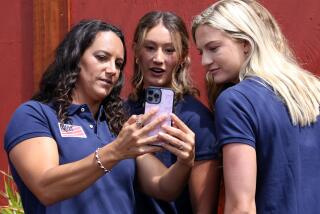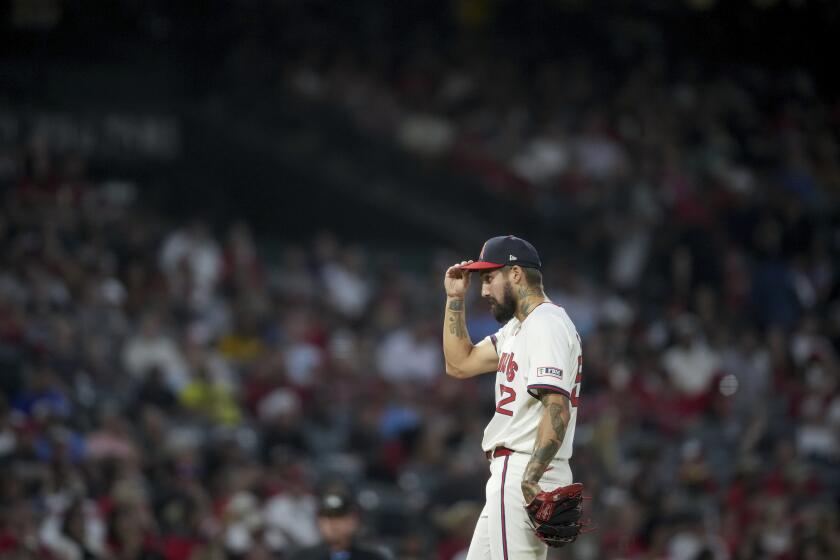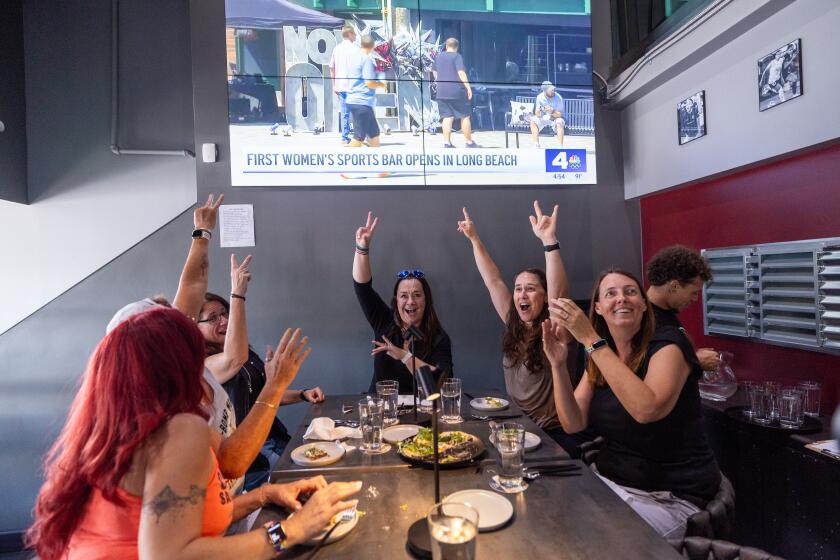Carnesecca, St. John’s: A Long-Standing Affair
Fittingly, the landmark victory was achieved in Macy’s window, which is Lou Carnesecca’s colorful shorthand for New York in general and Madison Square Garden in particular. The St. John’s coach has a love for the city and a reverence for the arena born of an era when New York was the capital of college basketball and the famous athletic palace, or at least the smoke-filled predecessor on Eighth Avenue, was its house of worship. As extensively as he has traveled around the 50 states in pursuit of a good game, to the chief of the Redmen the land beyond the Hudson remains Indian territory.
Few coaches in his sport have reached the milestone Carnesecca gained Saturday. Fewer still have done so at one institution. Remarkably, the man not only has amassed all 500 college victories at St. John’s but he holds two degrees from the school as well. Carnesecca is of, by and for St. John’s in a way that Dean Smith never can be at North Carolina nor Bob Knight at Indiana.
Smith was a substitute on the Kansas team that beat St. John’s for the 1952 NCAA title. Knight grew up in Ohio, played for the great Jerry Lucas-John Havlicek teams at the state university in Columbus and apprenticed for his current job at the U.S. Military Academy. John Wooden may have become synonymous with UCLA but he was a Hoosier by birth and an all-America at Purdue. And Adolph Rupp was a native Kansan who grew up to be a Kentucky baron.
Carnesecca, however, is fixed in place, as New York as the Empire State Building although not nearly so tall. He was born here 66 years ago and, aside from service in the Coast Guard, has spent his life here. He began his coaching career at St. Ann’s in Manhattan, returned to St. John’s as an assistant under Joe Lapchick and has been in the employ of his alma mater for all but three of the last 34 years. Nor did he disappear from view in the period from 1970 to 1973. He simply drove across the city line to work with the Nets.
“I told him then, ‘You don’t belong in the pros, you belong in college,’ ” St. John’s athletic director Jack Kaiser recalled Monday. “He’s better at practice than at the games because, basically, he’s a teacher.”
In time, Carnesecca came to the same conclusion. That was fortunate for St. John’s and for New York, to whose images he has made positive and enduring contributions. (Can you imagine the man pining away in Piscataway where the Nets landed after abandoning Nassau Coliseum?) His decision also has been good news for the sweater industry, for which he has done more than any public figure since Lana Turner, a former movie star in the time of his adolescence.
His indoctrination in college basketball occurred at the peak of the sport’s popularity in New York, at a time when the NCAA and National Invitation Tournament both staged their championships in the old Garden. The coaches in the metropolitan area included such legends as Clair Bee, Nat Holman, Howard Cann and Lapchick. Remarkably, Carnesecca, who wasn’t talented enough as a player to earn a spot on the varsity, has surpassed them all in victories at the college level, has become the winningest Division I coach in New York history.
Of course, it’s a different game now. Teams play more often. They play at a faster pace. They also play for bigger stakes before television audiences the size of which none of the old coaches could have conceived.
To his credit, Carnesecca hasn’t changed as drastically as his sport. “He does have more hair now,” noted Kaiser, a former baseball teammate at St. John’s. “He started out with a crewcut.”
The man remains loyal to old friends, old places. Carnesecca was among the first of his fraternity to promote the sport overseas and to this day is a celebrity in Italian and Spanish basketball circles. As a result of the Big East’s beneficial marriage with ESPN, fans from California to Florida know him as Looie. Not coach, not Lou but Looie. But none of that has altered his perception of his sport, of his university, of his city.
“He loves what he’s doing,” Kaiser said. And he loves where he’s doing it.
It means everything to Carnesecca that he posted his first victory as a high school coach in 1950 at the old Garden. “I was afraid to come out of the dressing room,” he recalled a few years ago. “They had to come get me. Danny Powers, may God rest his soul, hit seven jump shots in a row.”
“He was shaking the night he won his first college game, too,” Kaiser said authoritatively. “I know because I was his assistant and I was standing alongside him. Bobby McIntyre hit a jumper from the top of the key to beat Georgetown. That was before John Thompson.”
The year was 1965. Twenty-five seasons later, Carnesecca had his first opportunity for No. 500 against a Georgetown team coached by Thompson. The Redmen lost in the final minutes but rebounded to defeat Seton Hall three days later at the Garden. At the conclusion of the 81-65 triumph, his players carried their coach around the court. To paraphrase an expression of Lapchick, from whom Carnesecca learned more than man-to-man defense, he walked with kings that day.
En route from one to 500, the man has charmed the media with references to Puccini, Paganini and Michelangelo as well as dissertations on Italian wines. He has entertained audiences and amazed his players with explosions of energy that could have inspired creators of the Mario Bros. Nintendo game. Oh yes, his percentage at St. John’s is .732 and his team shares first place in the Big East pending Tuesday night’s game against Villanova.
“The coach of the Spanish national team, Antonio Diaz-Miguel, comes to the U.S. every year,” Kaiser noted. “He stops to visit three coaches. Dean Smith, Bobby Knight and Lou. That’s pretty good company.”
It’s true that the first two have accounted for four national championships and rule over a couple of semi-populous states. But they made their reputations in Chapel Hill and Bloomington. Carnesecca did it in Macy’s window, with 7 million people peering in, and that counts for something.
More to Read
Go beyond the scoreboard
Get the latest on L.A.'s teams in the daily Sports Report newsletter.
You may occasionally receive promotional content from the Los Angeles Times.






